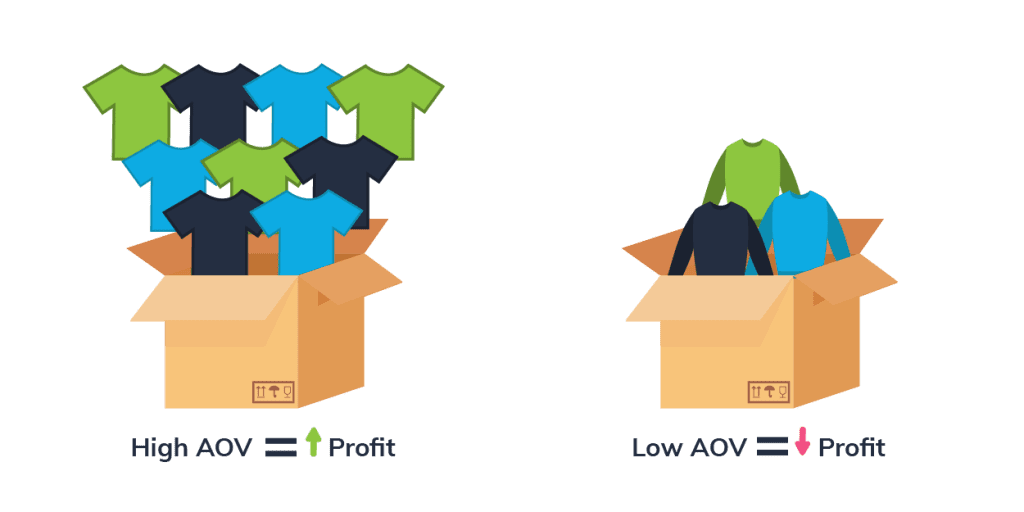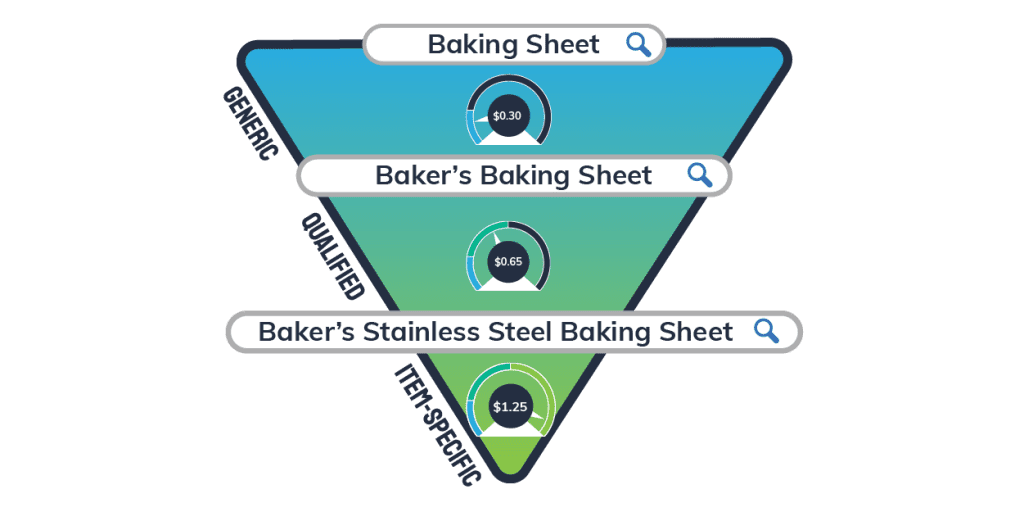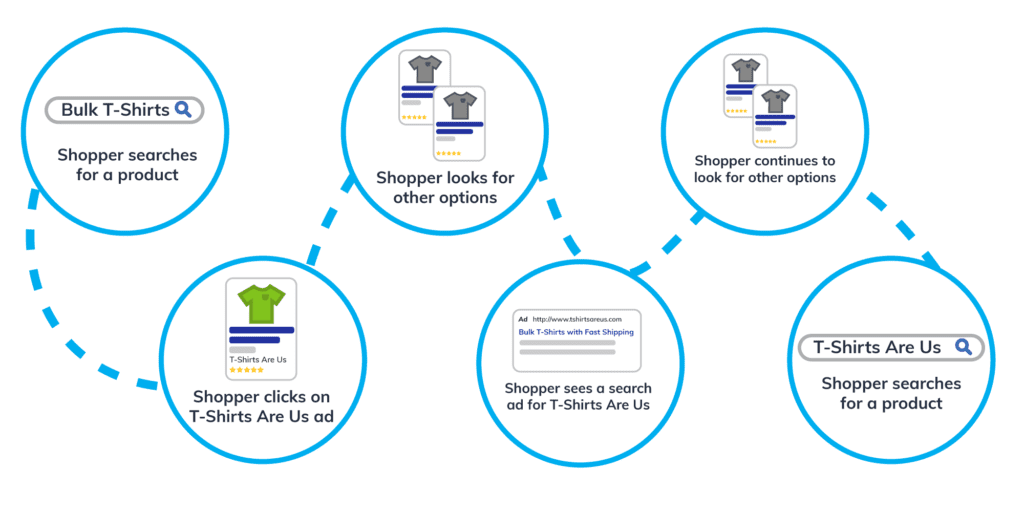Wholesale retailers and manufacturers know—they’re not like other e-commerce businesses! If you sell wholesale products online, you’ll face a different set of challenges than typical retailers. Your customers’ purchase behavior is very unlike that of other retailers, and as a result, you need to consider a different approach to your PPC advertising.
In this article, we’ll discuss the common problems that come with selling wholesale products online, and how to overcome those challenges.
Check out our quick video for 3 Tips for E-commerce Wholesalers today:

How to Measure Value in Wholesale Orders
As a wholesale retailer, you differ from typical e-commerce stores in one major way: you see a majority of revenue from bulk orders. Your cost structure is also likely to scale with the size of the order, so the larger the order, the larger your profit. For example, consider a wholesaler of customizable giveaway products. The cost to customize an order is somewhat static, whether you’re customizing five items or fifty.
While your average e-commerce retailer is just trying to drive sales or encourage customers to purchase again, you need to maximize the size of every sale, to maximize the value created. In other words, you need to maximize your average order value.
So how do you ensure you’re making the most of every order? Measure Average Order Value on the product segment (or ad group) level. Most likely, you have some items that generate a higher average order value than others. For example, a wholesale clothing retailer may see larger orders for t-shirts than for something at a higher price point, like sweaters or sweatshirts.
Of course, you can’t entirely forget about profitability. You still need to be able to direct ad spend to segments that are more likely to generate profit as well. Try segmenting out top-selling or high-AOV products from others in your campaigns. With this type of structure, you can both prioritize a higher AOV and ensure your campaigns are driving a high rate of profit.


Effective PPC Targeting for Wholesale E-Commerce Advertising Campaigns

In addition to prioritizing high-AOV products, you also need to consider campaign targeting. Most standard retailers find that generic terms (like “baking sheet”) aren’t as profitable as more specific terms (like “Baker’s Stainless Steel Baking Sheet.”)
Wholesalers aren’t an exception to this rule, but they do have some differences in qualified terms compared to other retailers. Words like “bulk” or “wholesale” indicate a searcher is in-market, while for many other retailers, qualified terms are often brand-reliant. The key is to determine which terms are driving sales and target those within the campaign.
An n-gram analysis is a good way to pinpoint which keywords and terms are driving sales for a retailer. This analysis parses your historical account data and determines how much in revenue and sales is attributable to a given one, two, or three-word phrase. With that, you can segment your queries from least valuable to most valuable, and drive spend toward any terms (generic or otherwise) that are converting well for your business. To learn more about segmenting queries, check out our e-book: Increase Google Shopping Profits with Keyword Segmentation.

Are Existing Customers Affecting Your Data?
Wholesale e-commerce advertising also sometimes has another unique issue: longer sales cycles. Often, someone looking to order a product in bulk will do research and compare vendors before ultimately purchasing. As a result, the last ad the customer interacts with isn’t the ad that introduced the customer to the retailer. In fact, the customer may have interacted with several of the retailer’s ads before purchasing, in addition to interacting with organic search results or even referrals. This is especially true if the retailer is running remarketing campaigns or any type of ongoing email marketing.
So how do you determine which channels are influencing sales?
Multi-touch attribution is a great solution to this problem – assuming you apply an analytical approach. Multi-touch attribution assigns some credit for a sale to every channel with which the customer interacted. Several models weigh various touch points differently depending on the context in which the touchpoint happened. For instance, some models assign credit equally to every sale, while others assign more credit to the touchpoints that are closest to the sale.
Let’s take a look at an example.

Example: An HR director is trying to purchase t-shirts for the entire organization. They begin by searching “bulk t-shirt order” and clicking on an ad for T-shirts Are Us. After checking out the options, the director leaves the site and researches other options. T-Shirts Are Us is running a remarketing display campaign, so the director sees display ads and clicks on one to compare pricing.
They still aren’t ready to purchase and continue exploring other options. During this time, they encounter T-Shirts Are Us search ads (as part of their Remarketing List for Search Ads or RLSA campaigns.) The director once again clicks on these ads, but ultimately winds up leaving the site. Finally, after exploring all the options, the director is ready to purchase. They search for T-Shirts Are Us and click on an organic search result, ultimately completing their order.
There are four touchpoints:
- Shopping ad
- Display ad
- RLSA ad
- Organic search result
With just a last-click approach, the only touchpoint that will receive credit for the sale is the organic search result, even though the shopping ad is the one that introduced this customer to the sale. The other ads may have played a role as well, keeping T-Shirts Are Us top-of-mind for the customer throughout the sales cycle. With multi-touch attribution, you can ensure the influence of the other channels is represented in your reporting in order to improve your wholesale e-commerce advertising.

Conclusion
Wholesale e-commerce advertising comes with an entirely different set of challenges than advertising for typical retailers. The value driven by ads is often not measured the same way, and campaign targeting may not follow the typical pattern for query segmentation either. Finally, the long sales cycle many wholesale retailers experience can make attribution a struggle.
With intelligent PPC strategies, though, wholesalers can dial in on the customers that matter most, and grow profit. The key is to understand how to effectively increase AOV, target your most valuable search terms, and measure sales accurately.
Learn more about how to hone in on the customers that matter most with our Shopify Integration. We’ll help you simplify customer LTV analysis so you can boost long-term profitability.






